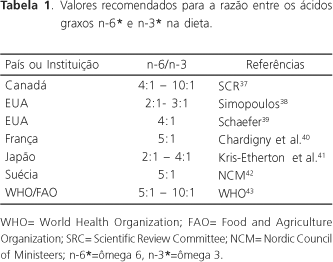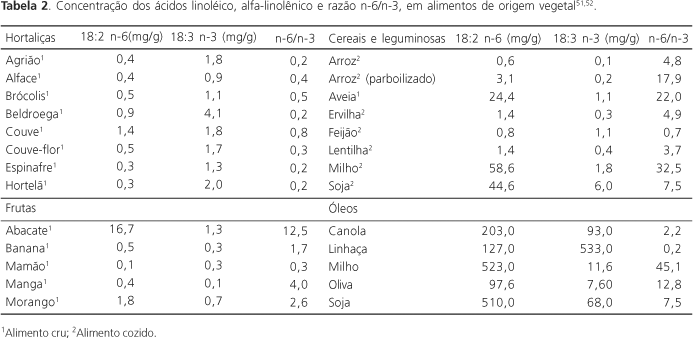Polyunsaturated fatty acids include the classes of fatty acids designated as omega-3 and omega-6. Very-long-chain polyunsaturated fatty acids as arachidonic and docosahexaenoic have important roles in the development and functioning of the brain and retina. This group of fatty acids cannot be synthesized by de novo pathway, but can be formed from linoleic and alpha-linolenic acid present in diet. In this article, the main factors that can inhibit desaturase enzymes activity involved in the synthesis of MLC-PUFAs are considered. Recommendations of omega-6/omega-3 ratio in diet proposed in several countries are presented, showing a coverage range from 4 to 5:1. Foods that are sources of alpha-linolenic acid and Very-long-chain are listed. The essentiality of Very-long-chain is very dependent of individual metabolism, and omega-6/omega-3 dietary ratio has a great influence in their health effects.
polyunsaturated fatty acids; eicosapentaenoic acid; docosahexaenoic acid; arachidonic acid; fatty acids; omega-3; fatty acids; omega-6





